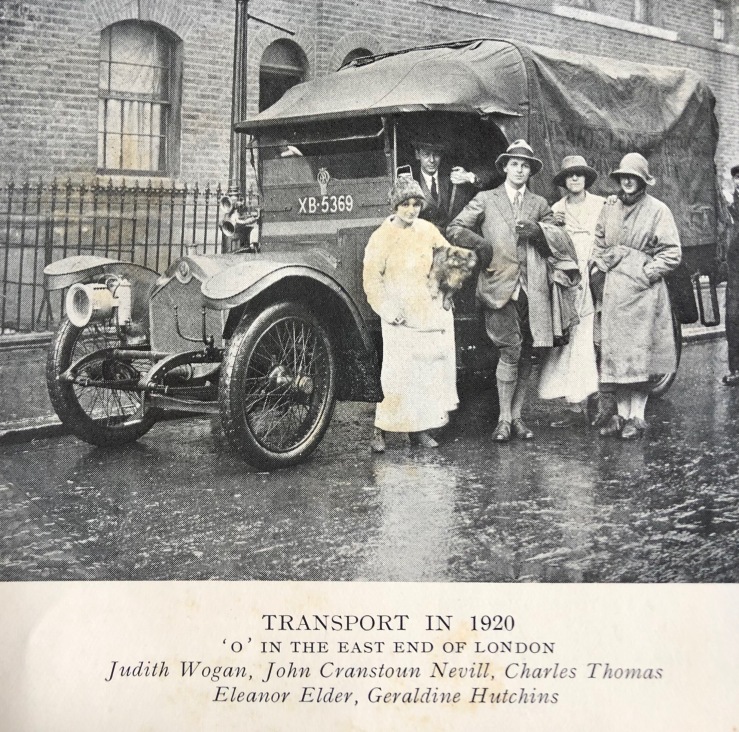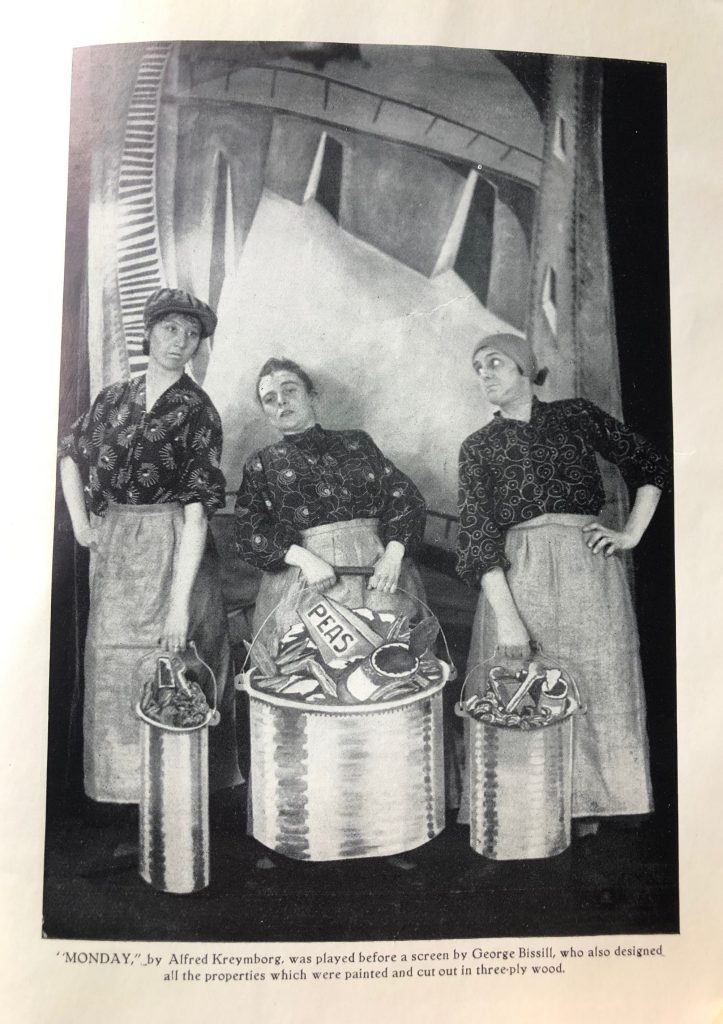This post, the first in a new series celebrating ‘Advocates for the Arts’, explores the forgotten women who, as secretaries, administrators and committee members, worked to extend public access to the arts in the first half of the twentieth century.
When I started my project, the arts organisations and committees I was researching had one thing in common: they were made up entirely of men. The General Post Office’s Poster Advisory Committee; the Empire Marketing Board’s Publicity Committee and the War Artists Advisory Committee didn’t contain one single woman. I began to wonder whether women simply weren’t allowed to work as civil servants or administrators during the first half of the twentieth century.
But I kept looking, and the women slowly began to reveal themselves. Eleanor Elder and Ana M. Berry essentially ran the Arts League of Service (1918-1937); Mary Glasgow did the legwork at the Council for the Encouragement of Music and the Arts (CEMA) from 1939 to 1946. Women like Betty Rea, Nan Youngman and Diana Uhlman occupied prominent committee roles at the Artists International Association (AIA) from its inception in 1933 to its demise in 1971. And pioneers like Lilian Somerville who worked at the British Council from the 1940s into the 1970s, directing the Fine Arts Department from 1947-71.
These women helped to revolutionise how art was produced and viewed in modern Britain. They argued for broader public access to the arts, employment for artists, and innovation in art education. Over the coming months, I’m going to blog about these women, celebrating their extraordinary achievements in the male-dominated art world.
In today’s post, I’m going to shine a light on Eleanor Elder, Honorary Secretary at the Arts League of Service (ALS). New to the ALS? Start with this very brief introduction.
Eleanor Elder

Actor, dancer, producer, founder and manager of the Arts League of Service Travelling Theatre, Eleanor Elder was something of a polymath.
From an early age, she had a passion for the stage, training with F. R. Benson’s Shakespearean Company, before joining Margaret Morris’s dance troupe as a pupil and later as a teacher at her dance school. But she missed the stage, and returned to acting in the Shakespearean Company before the outbreak of war took her to India.
Wartime restrictions on women sailing led to a two-year enforced absence, but Elder spent her time in India organising entertainments (one-act plays and ‘unusual variety items’) for the Red Cross. Their success inspired her to set up her own professional touring company on her return to the UK in Autumn 1918. With the help of Margaret Morris and her partner the Scottish Colourist J. D. Fergusson, Elder was introduced to Ana M. Berry (more of whom in another post) and the Arts League of Service was born.
The ALS’s early tours were difficult: they had next to no money and no suitable transport. Their lorry constantly broke down, earning it the name of ‘O’:
‘O’ was our lorry, so named by Hermione, for that was all our good manners permitted us to say when a tyre went west, or we were told to get out and walk.[1]

John Nevill, novelist, actor and fellow ALS stage manager, recalled how wardrobe shortages meant that costumes were passed between the players in the wings:
one used to sit in the dressing-room all ready for the next number, except for the breeches that someone else was wearing, and they were handed over at the close of the item. And the one pair of red-heeled buckled shoes that one stepped into at the side of the stage, as one’s predecessor stepped out of them, and which never seemed to be left in a position to take the right feet. One had to stoop and turn them round.[2]
Despite the early hardships, the ALS were a ‘very harmonious and happy band, for every one was willing to experiment and co-operate in our somewhat unusual type of programme.’[3] They were united by youth, energy and idealism, and a genuine belief that art could change the world. Elder spoke passionately about her ‘wish to take into the country a dramatic company that would, in their productions, touch the imagination of the people and lead them to a better understanding of the arts.’[4] In the wake of the First World War, art seemed more important than ever: it could unite communities, provide employment for artists, and help to create a brighter, fairer, post-war world.
Over the next eighteen years, the ALS gave many thousands of performances in village halls, municipal theatres and school auditoriums from Essex to the Isle of Arran.

Alongside fellow actress, producer, manager and Honorary Secretary Judith Wogan and secretary Veronica Wynne, Elder worked tirelessly to keep the Travelling Theatre afloat. Despite occasional grants from the Carnegie United Kingdom Trust, the ALS constantly struggled for money. The infrequent ALS Bulletins often featured pleas for donations. Before the financial crash, tours made a profit, but after 1930 the economic depression meant that all subsequent tours incurred a loss. The company disbanded in 1937.
Following its demise, Elder worked with the Combined Arts Group throughout WWII to teach amateur groups how to produce ALS-style entertainments. This is one of the ALS’s hidden legacies: although largely forgotten today, they inspired a whole generation of amateur dramatic societies, many of which still survive today.
In this, Elder reminds me of another formidable woman: my own grandmother, Joy Irving, who set up the Allerton Players in Somerset with my grandfather Dennis in 1966.

Until she retired in 2017 at the age of 90, she acted as the Players’ writer, director and producer, masterminding hundreds of plays and ‘entertainments’ given in the village hall (winter) and a local barn (summer). The Players have transformed the lives of generations of local people, myself included, and created a community that transcends age, politics and background. We need more women like Eleanor Elder and Joy Irving.
[1]Eleanor Elder, Travelling Players: The Story of the Arts League of Service(London: Frederick Muller, 1939), p. 39.
[2]John Nevill, quoted in Elder, Travelling Players, p. 13.
[3]Elder,Travelling Players, p. 10.
[4]Elder,Travelling Players, p. 9.

[…] The organisation was split into two sections: the Drama Section, headed by dance teacher Eleanor Elder, and the Arts Section, headed by South American art enthusiast Ana M. Berry. The ALS Travelling […]
LikeLike
[…] paintings to illustrate my talk. 80 images so far and counting… My cover image is taken from Eleanor Elder‘s Travelling Players, and shows an audience waiting outside a village hall to see the Arts […]
LikeLike
[…] For more on Berry’s colleague Eleanor Elder, Secretary of the ALS’s Drama Division, see the first entry in my Pioneering Women […]
LikeLike
[…] blog will be familiar with the work of the Arts League of Service (ALS), especially its founders Eleanor Elder and Ana M. Berry. The article places their work in the wider context of interwar arts organisations […]
LikeLike